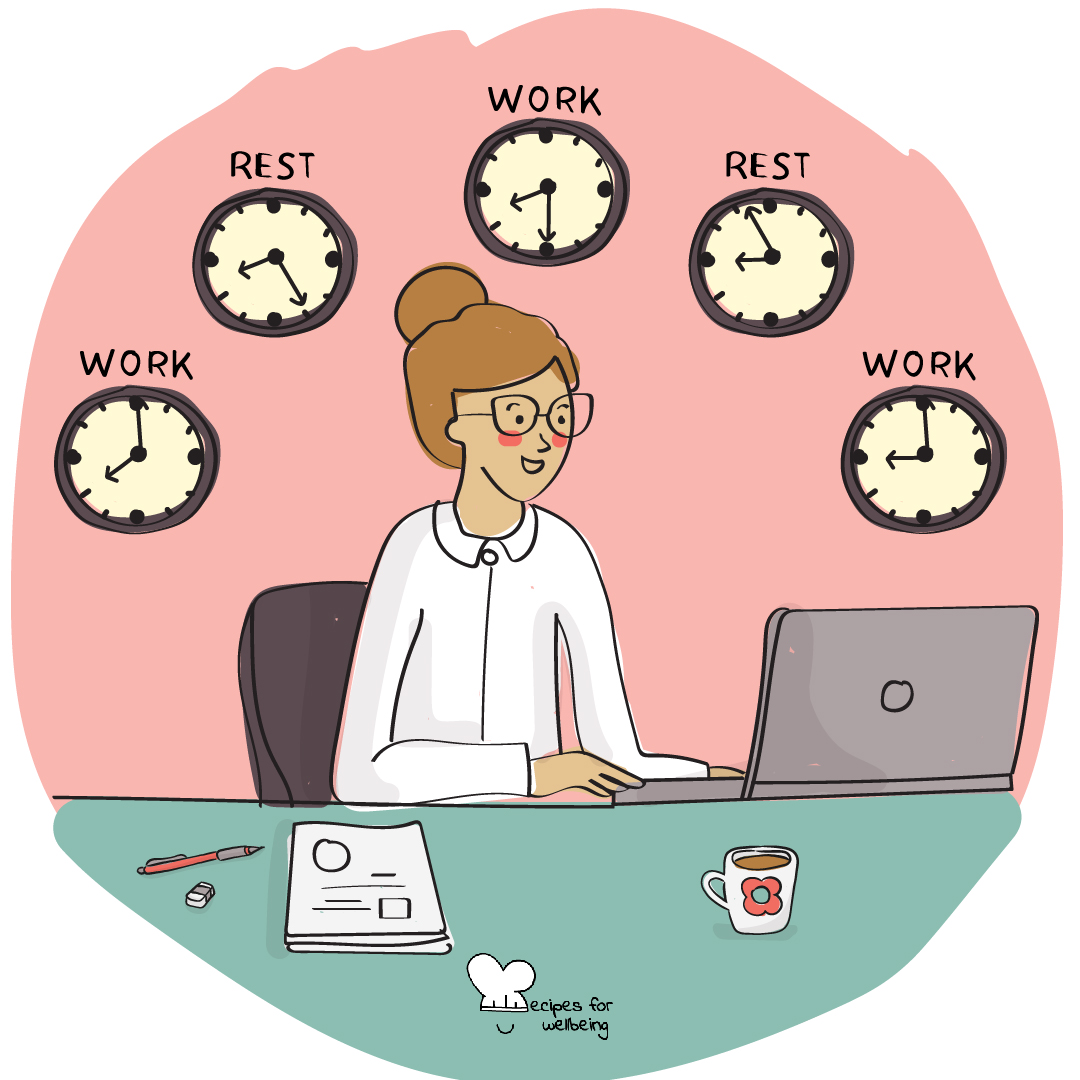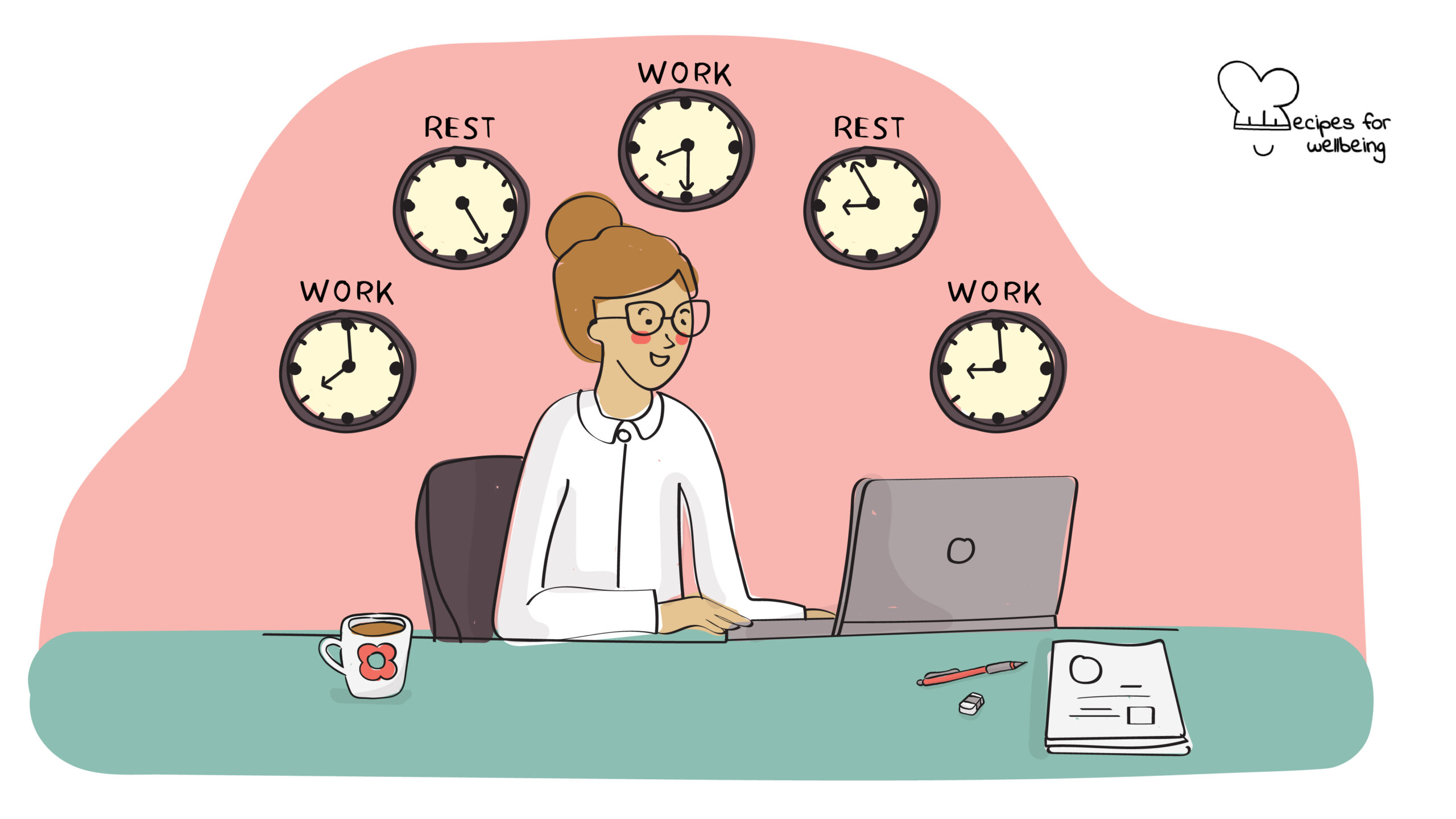
Pomodoro® Technique for Wellbeing
For many people, time is an enemy. We race against the clock to finish assignments and meet deadlines. The Pomodoro® Technique teaches you to work with time, instead of struggling against it. A revolutionary time management system, it is at once deceptively simple to learn and life-changing to use. ―Francesco Cirillo
👥 Serves: 1 person
🎚 Difficulty: Easy
⏳ Total time: Ongoing
🥣 Ingredients: 1 timer or alarm clock
🤓 Wholebeing Domains: Accomplishment, Awareness, Digital Consciousness, Meaning, Rest
💪 Wholebeing Skills: Digital boundaries, Flow, Focus, Pausing, Planning, Time management

Pomodoro® Technique for Wellbeing
📝 Description
How to increase productivity and wellbeing.
The Pomodoro® Technique is a time-management method developed by Francesco Cirillo in 1987. It breaks up work into bite-sized intervals. Normally, it works this way:
- Select a task you want to work on.
- Work on it for 25 minutes (a “pomodoro”, or tomato in Italian!).
- Take a short break for 5 minutes.
- Repeat 3 times.
- Once the fourth Pomodoro is over (100 minutes of work time, 15 minutes of break time), take a longer 15- or 20-minute break.
- Reset and restart!
However, the technique has never suggested what to do during the breaks. By following the Pomodoro Technique, you can increase your productivity AND with our suggestions, also your wellbeing!
This recipe has been kindly donated by Ilaina Rabbat.
👣 Steps
Step 1 – First break for spiritual wellbeing (5’ after 25’ of work)
Once you have selected your task and work on it for 25 minutes (set a timer for that!), take your first 5-minute break. During this break, prioritise your spiritual wellbeing and think about 10 things you are grateful for in your life. You can either do this whilst walking, meditating, or journaling about it. After 5 minutes, go back to your task and continue for another 25 minutes.
Step 2 – Second break for emotional wellbeing (5’ after 25’ of work)
During your second 5-minute break, prioritise your emotional wellbeing and do something that brings you joy. For some people, this could be eating something you like, watering the plants, looking outside the window, or dancing to some music! It is important that those tasks do not require the use of your computer or phone so you can fully disconnect from your digital devices. After 5 minutes, go back to your task and continue for another 25 minutes.
Step 3 – Third break for physical wellbeing (5’ after 25’ of work)
During your third 5-minute break, prioritise your physical wellbeing and either go for a quick walk or do something to reactivate your body (how about some squats, jumping jacks, or simply body stretches?). After 5 minutes, go back to your task and continue for another 25 minutes.
Step 4 – Reset and restart! (15’ after 25’ of work)
At the end of the fourth 25-minute work slot, take a longer break (15-20 minutes) before going back to the task. Well done! You have increased your productivity and your wellbeing!

